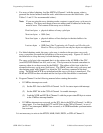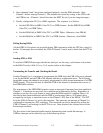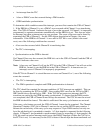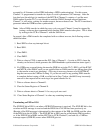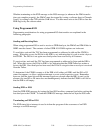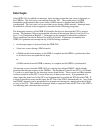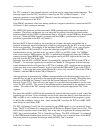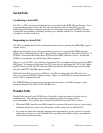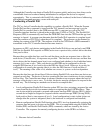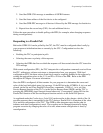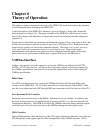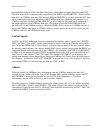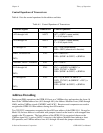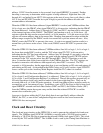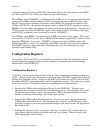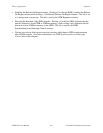Programming Considerations Chapter 5
GPIB-1014 User Manual 5-24 © National Instruments Corporation
Although the Controller can obtain a Parallel Poll response quickly and at any time, there can be
considerable front-end overhead during initialization to configure the devices to respond
appropriately. This is contrasted with Serial Polls, where the overhead, in the form of addressing
and enabling command messages, occurs with each poll.
Conducting a Parallel Poll
The TLC as Active Controller has the capability to conduct a Parallel Poll. When the Execute
Parallel Poll auxiliary command is issued and the TLC internal local message rpp is set, the
Parallel Poll is executed (that is, the GPIB message IDY is sent true) as soon as the TLC
Controller interface function is placed in the proper state (CAWS or CACS). The Parallel Poll
Response (PPR) is automatically read from the GPIB DIO lines into the CPTR and the rpp local
message is cleared. A program can determine that the Parallel Poll operation is complete based
upon the condition of CO (CO=1 when the poll is complete). The response can be obtained by
reading the contents of the CPTR. The response is held in the CPTR until a GPIB command is
transmitted or the TLC Controller function becomes inactive.
In response to IDY, each device participating in the Parallel Poll drives one and only one GPIB
DIO line (its Parallel Poll response or PPRn) active true or passive false, while it drives the other
lines passive false.
Because there are eight data lines, and for each line there can be one response (true or false) for
each device (2 lines/device), 16 responses are possible. The line that a device uses and how that
device drives the line depends upon how it was configured and whether its local individual status
message (ist) is one or zero. Thus, each device on the GPIB can be configured to drive its
assigned DIO line true if ist=1 and to drive the DIO line false if ist=0. However, it can also be
configured to do exactly the opposite (that is, to drive the DIO line true if ist=0 and false if
ist=1). The meaning of the value of ist, whether one or zero, is system- or device-dependent.
Because the data lines are driven Open Collector during Parallel Polls, more than one device can
respond on each line. The device or devices asserting the line true overrides any device asserting
the line false. The Controller must know in advance whether a true response means the local ist
message of the device is one or zero. To do this, the device must be configured to respond in the
desired way. The following two methods can be used to accomplish this:
• Local configuration (Parallel Poll function subset PP2) involves assigning a response line and
sense from the device side in a manner similar to assigning the device GPIB address. Thus,
one device might be assigned to respond with remote message PPR1 (driving DIO1), while a
second device might be assigned to respond with the remote message PPR3 (driving DIO3),
both positive (that is, true response if ist=1). Local configuration is static in that it does not
change after the system is integrated (that is, the hardware is configured and installed).
• Remote configuration (Parallel Poll function subset PP1) involves dynamically assigning the
response line and sense to devices on the GPIB. This is accomplished using the Parallel Poll
Enable (PPE) and Parallel Poll Disable (PPD) commands, which are issued by the Active
Controller. The sequence for remotely configuring devices on the GPIB is as follows:
1. Become Active Controller.



